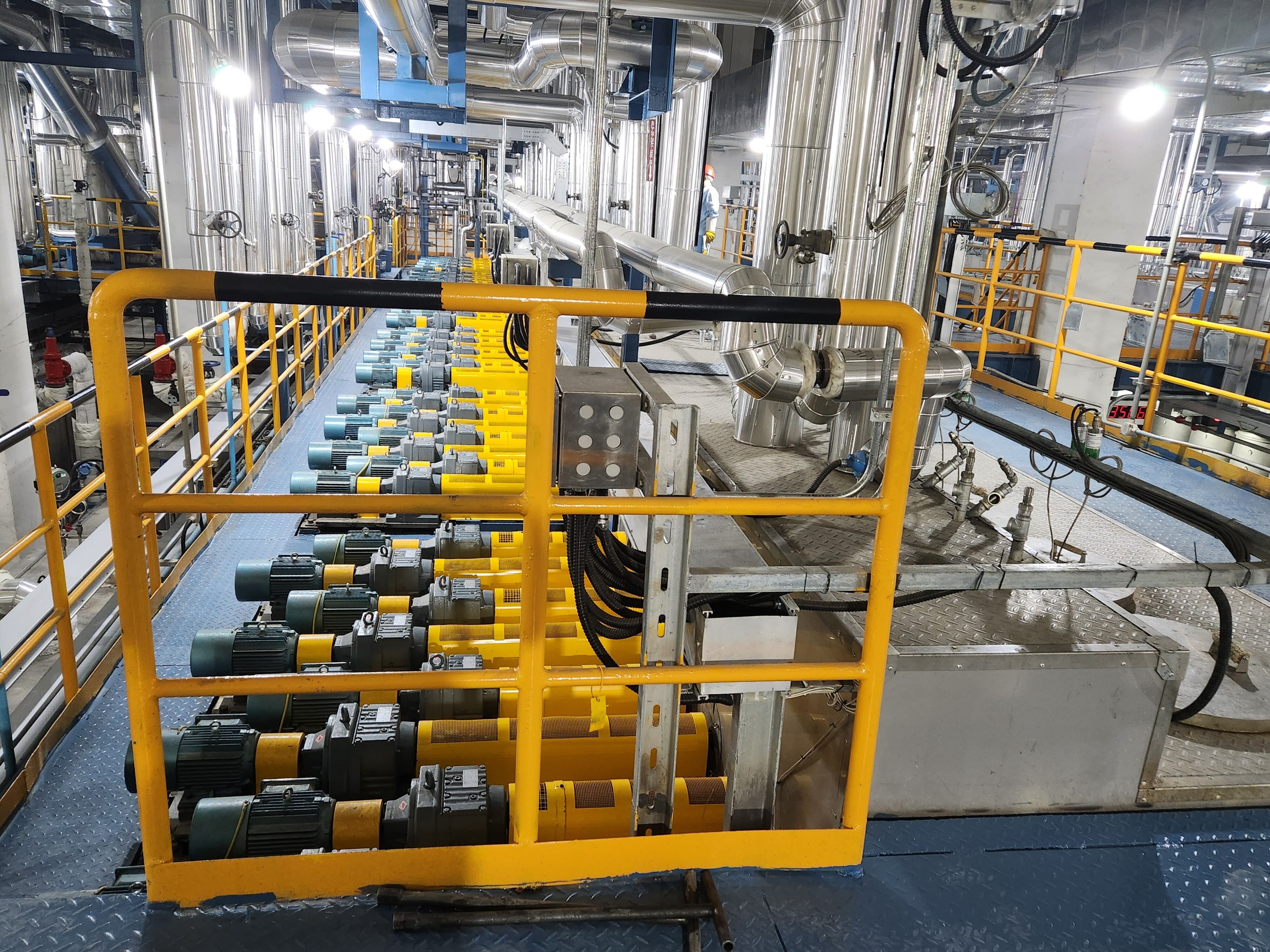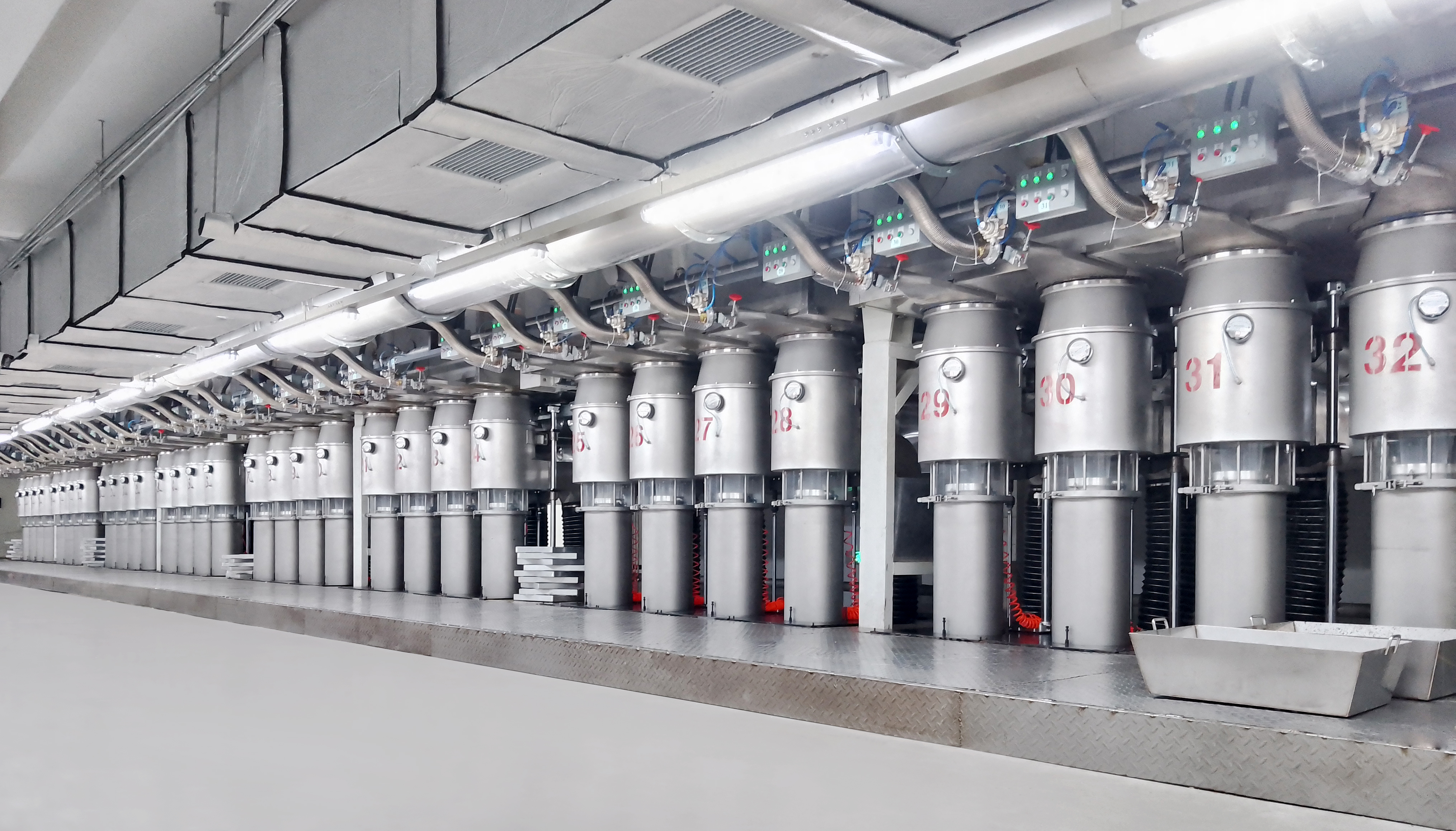Bikomponentvesel is 'n unieke funksionele veseltipe. Dit bestaan uit twee verskillende polimeerkomponente wat saamgevoeg word deur gespesialiseerde spinmetodes soos konjugaatspinning. Só verkry bikomponentvesel die veelsydige eienskappe wat eenvoudige enkelkomponentvesels ontbeer. Spesifiek, in teenstelling met enkelkomponentvesels, kan bikomponentvesel in verskeie verskillende kombinasies ontwerp word, insluitend kern-mantel-, sy-aan-sy- en eiland-in-see-strukture. Elkeen van hierdie strukture verleen aan bikomponentvesel verskillende funksies waar moderne produksie sterk op staatmaak. 'n Uitstekende voorbeeld van 'n kern-mantelstruktuur is een waar die vesel oor die sterkte van die kern en die hidrofilisiteit van die mantel beskik, wat dit 'n uitstekende kandidaat maak vir die vervaardiging van higiënieprodukte. Produksie word gemoderniseer wanneer die tallose eienskappe van bikomponentvesel benut word, wat aan ondernemings die geleentheid bied om onnodige verwerkingsfases te elimineer, en sodoende tyd en koste te optimaliseer. Vanaf grondstofkeuse tot by die spinprosesse word elke stap ontwerp met doeltreffende produksiebehoeftes van 'n wye verskeidenheid nywerhede in gedagte, wat bikomponentvesel tot 'n fundamentele komponent van moderne vervaardiging maak.
Die tekstielsektor is 'n ander hooftoepassingsveld van biesamestelling vesel. Die invoering van biesamestelling vesels in die tekstielsektor verbeter aansienlik die doeltreffendheid van tekstielproduksie.
Om sagte twee-komponente nie-geweefde stowwe in die tekstielbedryf te produseer, bied twee-komponente duidelike voordele. Metodes vir die produksie van nie-geweefde stowwe vereis gewoonlik 'n aantal stappe om die gewenste sagtheid en sterkte te bereik. Twee-komponente nie-geweefde stowwe vereenvoudig egter die produksieproses van nie-geweefde stof. Byvoorbeeld, kan twee-komponente nie-geweefde stowwe wat kernomhulsel-strukture gebruik, termies by laer temperature bind, wat bydra tot die vermindering van bindingstye en moontlike verminderde energieverbruik om lêers te bind. Twee-komponente nie-geweefde stowwe bied ook eenvormigheid, wat produkdefekte in nie-geweefde stowwe voorkom, die behoefte aan herwerkings verminder, en die produksiedoeltreffendheid van die onderneming verhoog. Maatskappye in die tekstielbedryf wat twee-komponente nie-geweefde stowwe gebruik, rapporteer 'n vermindering in produksietyd van tussen 15% en 20% en 'n toename in die produkgehalte-slaagsyfrate van meer as 10%. Die voordele van twee-komponente nie-geweefde stowwe is onteenseglik en verbeter fundamenteel produksietempo's in die tekstielbedryf.

Higiënieprodukte, soos babadopers en volwasse inkontinensieprodukte, vereis uitstekende waterabsorpsie en lugdeurlaatbaarheid.
Bikomponentvesel het die mees gebruikte materiaal vir die vervaardiging van higiëneprodukte geword weens sy uitstekende doeltreffendheid en geoptimaliseerde produksieprosesse. Tydens die vervaardiging van die absorberende kern van babadopers, gebruik die industrie gewoonlik die eiland-in-see-struktuur bikomponentvesel. Hierdie tipe bikomponentvesel vorm na spesifieke behandeling 'n enorme hoeveelheid mikropore, wat die mate van waterdeurlaatbaarheid en waterretensie van die absorberende kern verlaag. Die tradisionele absorberende materiale het die absorberende kern dikker gemaak. Gevolglik vereenvoudig die gebruik van bikomponentvesel op ekonomiese wyse die doperassemblageproses deur grondstowwe en tyd te minimeer. Die velvriendelike eienskap van die vesel voorkom produkverwante irriterings en velprobleme, en sodoende ook produkretoures. Die verwydering van produksiestappe verbeter die spoed, en 'n toename in produksie van 20–30% word die gevolg van bikomponentvesels. Die belangrikheid van hierdie vesel vir die vervaardiging van higiëneprodukte is duidelik.
Die meeste ondernemings in moderne produksie poog om kosteminimering te bereik, en biesamestelling vesel help om dit langs verskeie verskillende paaie te bereik. Eerstens, by die modulasie van grondstowwe, help spesiaal ontwerpte biesamestelling vesels wat aan die spesifieke behoeftes van die produk voldoen, om elke veselkomponent volledig te verbrand sonder dat enige reste agterbly. Byvoorbeeld, wanneer sekere filtermateriale geproduseer word, kan die kernkomponent van die biesamestelling vesel gemaak word van 'n hoësterkte polimeer, en die omhulsel kan 'n lae-koste polimeer wees wat doeltreffend filtreer. Hierdie kombinasie verseker nie net die filtreereffek van die produk nie, maar verlaag ook die koste van grondstowwe aansienlik. Tweedens, gedurende die produksieproses, help die insluiting van biesamestelling vesel om die energieverbruik te verminder. Dit is omdat, soos vroeër bespreek, termiese binding van biesamestelling vesels by aansienlik laer temperature bereik kan word, wat dus die benodigde energie-inset vir verhitting tydens produksie verminder. Statisties gesien, ervaar ondernemings wat biesamestelling vesel in die produksieproses gebruik, 'n vermindering in energieverbruik van ongeveer 10% tot 15%.
Derde, omdat produkte gemaak van bikomponentvesel lank duur, hoef sake hulle nie so gereeld te vervang nie. Dit bespaar sake geld op die lange termyn. In die industriële filtrasiesektor byvoorbeeld, duur bicomponentveselfilterelemente 2 tot 3 keer langer as tradisionele filterelemente. Dit bespaar sake geld op filtervervangingkoste. Duidelik help bicomponentvesel sake om geld te bespaar.

Soos wat die fokus op omgewingsbeskerming toeneem, moet produksie in alle sektore ook aan hierdie nuwe vereistes voldoen. Bicomponentvesel, die nuwe funksionele vesel, help om hierdie vereistes te ontmoet. Ten eerste is sekere tipes bicomponentvesel herwinnbaar. Byvoorbeeld, kan bicomponentvesel wat van poliëster en polipropileen gemaak is, na gebruik gesmelt en weer hergespin word, wat sodoende afvalvesel verminder. Ook is die produksie van bicomponentvesel omgewingsvriendeliker as die produksie van tradisionele vesel.
Weens sy unieke spinproses, stoot bikomponentvesel minder skadelike stowwe vry, insluitend vlugtige organiese verbindings, en verbruik die produksieproses minder water as tradisionele veselproduktiemetodes. Verder toon produkte gemaak van bicomponentvesels in sommige gevalle uitstekende biologiese afbreekbaarheid. Byvoorbeeld, kan bicomponentvesels wat polylaktiese suur en polihidroksialkanoaat bevat, in die oop omgewing afbreek, en sodoende potensiële omgewingskade deur afvalverontreiniging voorkom. Die gebruik van bicomponentvesels in die produksieproses verbeter nie net die produksiedoeltreffendheid nie, maar strook ook met die ontwikkelende konsep van omgewingsbeskerming, wat fundamenteel belangrik is vir die volhoubaarheid van ondernemings.
Bikomponentvesels sal meer uitgebreide moontlikhede hê vir toekomstige ontwikkeling in produksie. Vir produkinnovasie en -ontwikkeling, sal meer gespesialiseerde navorsing en ontwikkeling die verskeidenheid beskikbare funksionele bikomponentvesels verbeter, wat sodoende die doelstellings van tal diverse en groeiende bedryfsbehoeftes bereik. Moderne produksie word al hoe gevorderder op gebiede soos intelligensie, outomatisering en omgewingsbehoud. Bikomponentvesels sal dus ook gevorderder raak om aan hierdie nuwe bedryfsvereistes te voldoen.
Bikomponentvesels met antibakteriële en antivirale funksies sal wyer gebruik word. Dit sal ook mediese-toestelvervaardigers help om hul produksiedoeltreffendheid te verhoog en die kwaliteit van hul produkte te verbeter. Vanuit 'n produksietegnologie-oogpunt, sal die vervaardigingsproses van bikomponentvesels groter kognitiewe vooruitgang ervaar. Die integrasie van volledig outomatiese produksylyne en kognitiewe eie beheerstelsels sal die produksie van bikomponentvesels sowel as die konsekwentheid van hul kwaliteit verhoog. Verder word die samevoeging van bikomponentvesels met ander nuwe materiale beskou as die mees belowende pad. Dit sal sinergisties die sterktene van verskillende materiale benut en produkfunksionaliteit sowel as produksiedoeltreffendheid verbeter. Bikomponentvesels sal voortgaan om 'n alomteenwoordiger en meer invloedryke hulpbron binne moderne produksie te wees, en sal 'n steeds wyer reeks nywerhede bevorder.
 Hot Nuus
Hot Nuus2024-07-25
2024-07-25
2024-07-25